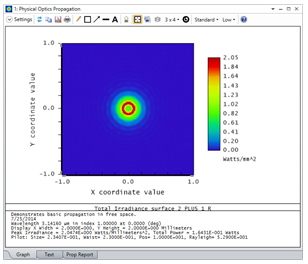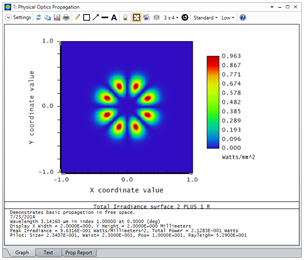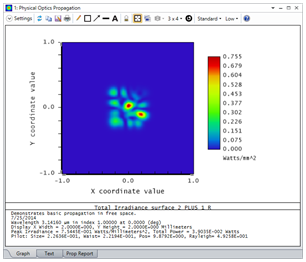If I know the M2 value of the Gaussian beam I want to study, can I use that value to accurately simulate the beam in the Physical Optics Propagation tool?
Can I simulate a specific Gaussian beam in POP if I know the M2 value?
Best answer by Allie
While can always calculate a value of M2 for a given beam, having the value of M2 alone is not enough information for defining a beam in Physical Optics Propagation. The M2 is used to estimate the amount of error in a beam compared to an ideal Gaussian beam. As such, there are infinite possible beams which can give the same M2 value.
For example, all the following beams are with waist = 0.2 and M2 = 5. You can see they are all very different. And we cannot say which is correct.



There is no perfect way to simulate a real beam with a given M2 value, as more information about the beam is required for the simulation.
One of the possible ways I can think of is to first simulate an ideal Gaussian beam and then use the M2 value as a “scale” for the simulation result. For example, you may consider the beam size and the divergence angle of the result beam will be sqrt(M2) times large. This type of analysis is available as a built-in functionality of the Paraxial Gaussian Beam analysis in OpticStudio.
Enter your E-mail address. We'll send you an e-mail with instructions to reset your password.




